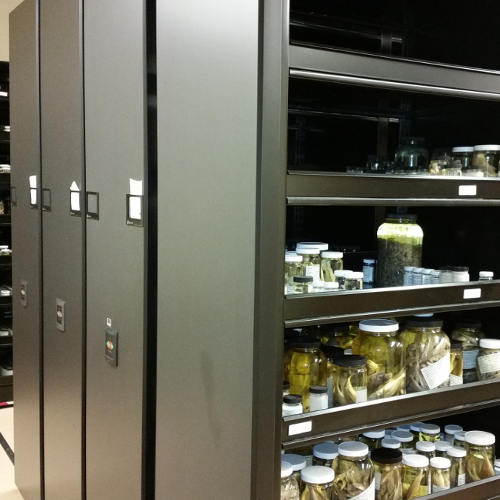USM Ichthyological Collection
The ichthyological collections at USM contain over 85,000 cataloged lots and support a variety of research and education needs. It is one of the largest collections dedicated to the fishes of Mississippi. The collection is split among the Hattiesburg (primarily freshwater) and Gulf Coast Research Lab (GCRL; primarily estuarine and marine) campuses.
The Hattiesburg collection was started by Dr. Stephen T. Ross and his students from 1974 until 2004. By 1998, the collection contained a total of 20,325 lots and a large uncurated backlog from Black Creek and Horn Island, as well as larval collections from a variety of sources. At that time, Dr. Ross and Dr. Stuart G. Poss (former curator at GCRL) received Nation al Science Foundation (NSF) funding to process the backlog of material and improve the overall curation of the collections. The collection was improved by: 1) cataloging backlogged material into both USM collections, 2) installing new shelving and storage infrastructure, and 3) transfer lots from 45% isopropyl to 70% ethanol at Hattiesburg. By the end of the project in 2001, a total of 7,200 new lots had been cataloged and the entire collection is now stored in 70% ethanol.
The collection continued to grow under the direction of Dr. Ross until his retirement in the spring of 2004 at which time the collection held approximately 28,000 lots. During this period, the collection had expanded beyone the capacity of the allocated space on the Hattiesburg campus. As a result, the collection was split into multiple locations that made nangement difficult.

